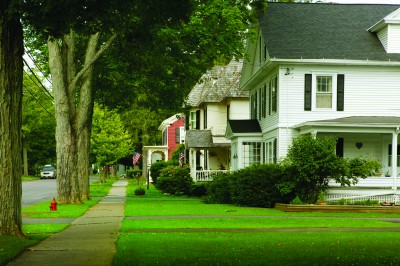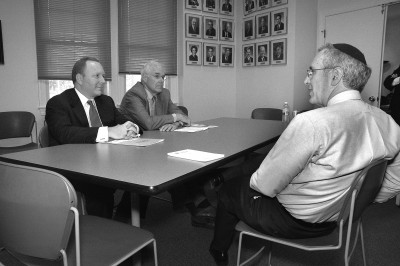CHAI: Making A Stand in Upper Park Heights Part 1

Article by Simone Ellin. Originally published in Generations 2009-2010: 50th Anniversary Double Issue: The Search for Social Justice.
Part I: A Story of Migration
The story of Baltimore Jewry is first and foremost a story of migration. It begins with the transatlantic crossing of Jews from Europe to America in several waves from the mid-nineteenth to mid-twentieth centuries—but it doesn’t end there. Once settled in Baltimore, and as they became assimilated and financially secure, most Jews moved from downtown immigrant enclaves first to northwest city neighborhoods and later to the northwest suburbs.

In one neighborhood, the familiar migration pattern has been interrupted. The Jews’ movement out of the Upper Park Heights section of Baltimore City and into the suburbs has been forestalled partly thanks to the work of Comprehensive Housing Assistance Inc., better known as CHAI. The community development and housing arm of The Associated: Jewish Community Federation of Baltimore, CHAI promotes homeownership for people of all ethnic and religious backgrounds, develops housing, and carries out other activities that support community stability and neighborhood improvement. While the agency has built senior housing facilities in Baltimore County, CHAI’s primary focus is Upper Park Heights, a neighborhood that is home to large numbers of Orthodox Jews and African Americans.
When The Associated founded CHAI in 1969, its acronym stood for Comprehensive Housing for the Aging, Inc., and its primary objective was to provide housing for the elderly. The organization was created after The Associated’s 1967 demographic study of the Jewish community exposed a need for more comprehensive services for an increasingly aged population. CHAI’s first project was the establishment of Concord House, The Associated’s first residential facility for seniors. Fourteen years would pass before CHAI would morph into the organization it is today.
In 1983 CHAI took on a new mission and a new name: Comprehensive Housing Assistance, Inc. The transition came about when community leaders recognized the need to address larger issues of neighborhood change and racial succession in the Northwest area, where major communal institutions were centered. Social worker and community planner Ken Gelula was a new staff member in The Associated’s Planning Department when he began working with a lay committee to generate ideas for neighborhood stabilization in the area. After meeting with representatives of various communal organizations and city agencies, the lay group concluded that The Associated would need to put resources into a comprehensive effort to stabilize the neighborhood. Since CHAI already existed as a corporate entity focused on housing issues, Associated officials decided to ask CHAI to assume responsibility for a neighborhood stabilization program, in addition to continuing its services to seniors. Gelula was named Executive Director of the revamped organization, a post he holds to this day.

CHAI’s task was to prevent history from repeating itself. “In 1970,” Gelula explains, “the southern part of Park Heights, between Northern Parkway and Belvedere Avenue, was 50 percent white and 50 percent African American. The area to the north, from Northern Parkway to Glen Avenue, was 90 percent Jewish. By 1980, the area south of Northern Parkway had become 90 percent African American and in Upper Park Heights the percentage of Jews had shrunk to 60 percent.” Jewish communal leaders had experienced this trend before. They were concerned that within a few years there would be virtually no Jews remaining in Park Heights.
Rabbi Elchonan Oberstein, a member of the Park Heights Orthodox community, recalls what he perceived as a drastic change in the neighborhood between the late 1960s and late 1970s. “I was married to a girl who grew up on Glen Avenue in 1969. After we were married we lived on Devonshire off Park Heights Avenue for a short while. We moved away for some years, and came back to the neighborhood in 1977. When we returned we found that the neighborhood had changed so rapidly. There were much fewer Jews, and there was a real fear that Upper Park Heights would become like Lower Park Heights, Forest Park, and other Baltimore city neighborhoods that once had thriving Jewish communities. We ended up living at 5905 Park Heights Avenue. It was a duplex we bought for $27,000. People thought we were taking a big chance by buying there,” says Rabbi Oberstein.
